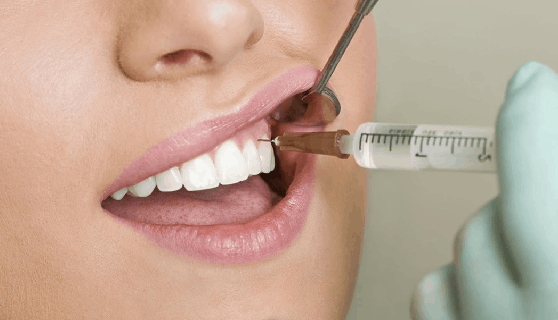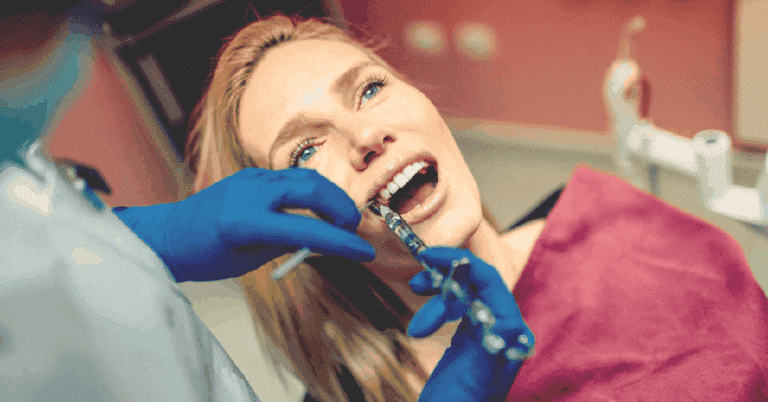What is neighborhood sedation?
Local anesthesia alludes to utilizing a medication called a sedative to briefly numb a little territory of your body. Your PCP may utilize a local anesthesia before doing a minor methodology, for example, a skin biopsy. You may likewise get neighborhood sedation before a dental technique, for example, a tooth extraction. In contrast to general sedation, neighborhood sedation doesn’t make you nod off.
Local anesthesia works by forestalling the nerves in the influenced region from conveying vibes of agony to your cerebrum. It’s occasionally utilized with a narcotic. This encourages you to unwind.
Continue pursuing to get familiar with the various kinds of nearby sedation and when they’re utilized.
What are the various sorts?
There are two primary sorts of local anesthesia, contingent upon how they’re regulated.
Effective sedatives
Effective sedatives are applied legitimately to your skin or bodily fluid layers, for example, within your mouth, nose, or throat. They can likewise be applied to the outside of your eye. Effective sedatives come as:
- Fluids
- Creams
- Gels
- Splashes
- Patches
Sometimes, your primary care physician may utilize a mix of nearby sedatives for an all the more dependable impact.
Instances of systems that may include effective sedation:
- Applying or evacuating lines
- Anything including a needle jab
- IV inclusion
- Catheter inclusion
- Laser medicines
- Waterfall medical procedure
- Endoscopy
Over-the-counter (OTC) effective sedatives, for example, benzocaine (Orajel), can likewise help oversee torment from:
- Tooth, gum, or mouth bruises
- Open injuries
- Sore throat
- Minor consumes
- Poison ivy rash
- Bug nibbles
- Hemorrhoids
- Infusion
Local anesthesia can likewise be given as an infusion. Injectable sedatives are regularly utilized for desensitizing during methods, as opposed to torment the executives.

Methodology that may incorporate an infusion of a local anesthesia include:
- Dental work, for example, a root trench
- Skin biopsy
- Evacuation of a development under your skin
- Mole or profound mole evacuation
- Pacemaker inclusion
- Symptomatic tests, for example, a lumbar cut or bone marrow biopsy
Which type will I need?
The rundowns above are general models. A few of these methods, for example, waterfall medical procedure, should be possible with either sort of sedative. Your PCP will decide the best sort for you dependent on a few elements, including:
- The length of the method
- The size and area of the region that requirements desensitizing
- Any fundamental wellbeing conditions you have
- Any drugs you take
How is it controlled?
You don’t have to do a lot to plan for neighborhood sedation. Simply make a point to tell your primary care physician on the off chance that you:
- Have any open injuries close to the influenced zone
- Take any prescriptions, particularly ones that expansion your danger of dying, for example, anti-inflammatory medicine
- Have a draining issue
You’ll be given neighborhood sedation right away before your technique to give it an opportunity to begin working. This typically just takes a couple of moments. While you shouldn’t feel any torment, you may even now feel impressions of weight.
Tell your primary care physician immediately on the off chance that you begin to feel any torment during the method. They may need to give you a higher portion.
Local anesthesia for the most part wears off inside 60 minutes, yet you may feel some waiting deadness for a couple of hours. As it wears off, you may feel a shivering sensation or notice some jerking.
Attempt to be aware of the influenced region while the sedation wears off. It’s anything but difficult to coincidentally harm the desensitized zone in the couple of hours following a technique.
For OTC nearby sedatives like Orajel, know that it might sting or consume a little when you initially apply it. Never utilize more than the suggested sum on the item’s name. It very well may be harmful if an excessive amount is caught up in your skin.
What are the reactions?
Local anesthesia are commonly sheltered and ordinarily don’t cause any symptoms, beside some shivering as it wears off. Be that as it may, in case you’re given excessively, or the infusion goes into a vein rather than tissue, you may have more reactions, for example,
- Ringing in your ears
- Tipsiness
- Deadness
- Jerking
- A metallic preference for your mouth
In incredibly uncommon cases including high portions, sedation may cause:
- Seizures
- Low circulatory strain
- Eased back pulse
- Breathing issues
It’s likewise conceivable to have an unfavorably susceptible response to a sedative, yet this is uncommon. A recent report assesses that just around 1 percent of individuals are adversely affected by nearby sedatives. Furthermore, most hypersensitive responses to nearby sedatives are because of an additive in the sedative, as opposed to the medication itself.
Expert opinion
- Dr. Manan Dhulia Dental Director of Sabka dentist says “Local anesthesia is the temporary loss of sensation or pain in one part of the body produced by a topically applied or injected agent without depressing the level.”





